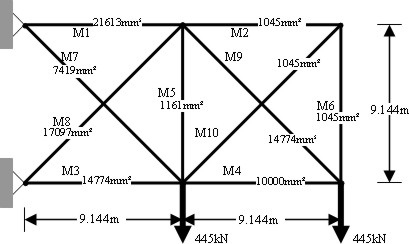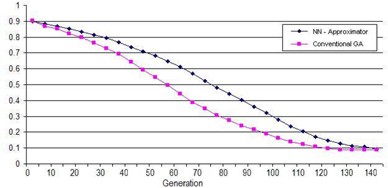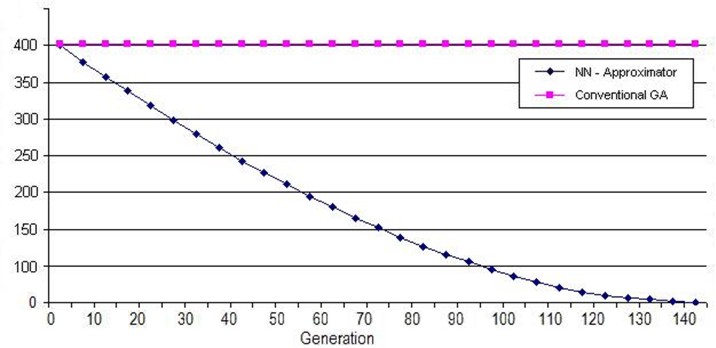
engineering & technology publications
ISSN 1759-3433
PROCEEDINGS OF THE FIFTH INTERNATIONAL CONFERENCE ON ENGINEERING COMPUTATIONAL TECHNOLOGY
Fitness Evaluation for Structural Optimisation Genetic Algorithms Using Neural Networks
1School of Information Technology and Computer Science,
2School of Civil Mining and Environmental Engineering,
University of Wollongong, Australia
To overcome the two fundamental problems with GAs we have been experimenting with back-propagation neural networks that are trained to recognise the fitness of genetic codes. Training the neural network is achieved by using training patterns comprised of genetic codes and their fitness which is obtained from the fitness function or memory. Although, this still requires fitness evaluations to be done, our experiments have shown that only a subset of the population is required to train the neural network to classify the fitness sufficiently for evolution to progress. This can result in a considerable cost saving when it is expensive and time consuming to perform fitness evaluations.
One classical truss sizing optimization problem often designed with genetic algorithms involves discovering the cross-section member areas of the 10-bar indeterminate steel truss shown in Figure 1. The objective here is to minimize the overall weight of the truss without over-stressing the structure or causing significant deflection.
To evaluate each population, members chosen to be in the training data subset were associated with their fitness from the objective function. All other members were either assigned their fitness from the hash table or from the neural net by classifying each gene vector. Figure 2 shows the best member fitness from each generation for both the GA equipped with the NN fitness approximator and a conventional GA with no fitness approximator. The number of fitness evaluations performed by the objective function over the course of the evolution can be seen in Figure 3. This represents an overall cost saving of approximately 70% in terms of the number of population members evaluated with the objective function, despite the result being produced in more generations. Figure 1 shows the solution produced by the GA equipped with the fitness approximator which compares well with the result produced by the conventional GA. The total mass of this truss is 2702kg. This compares with a best value in [1] of 2491kg after 2000 generations.
The full paper shows how the NN approximator can handle binary penalty fitness functions while the conventional GA fails to navigate the solution space.
- 1
- N. Turkkan, "Discrete optimization of structures using a floating-point genetic algorithm", In "Proceedings of the Annual Conference of the Canadian Society for Civil Engineering", Moncton, N.B., Canada, 2003.
purchase the full-text of this paper (price £20)
go to the previous paper
go to the next paper
return to the table of contents
return to the book description
purchase this book (price £105 +P&P)


